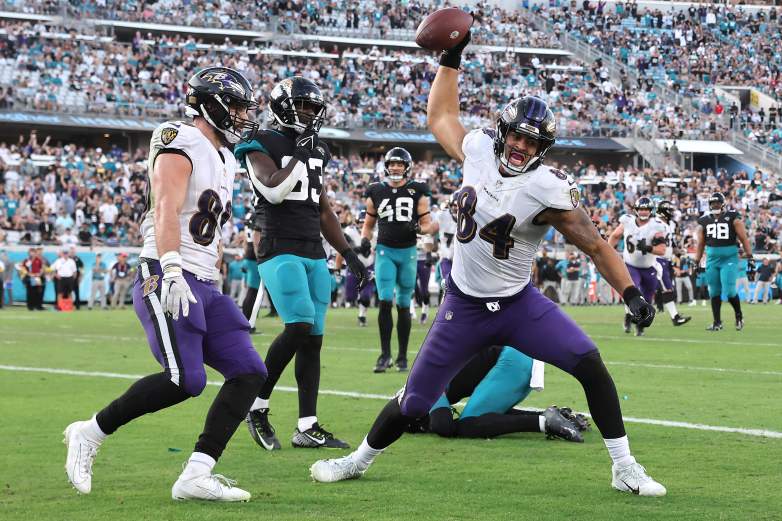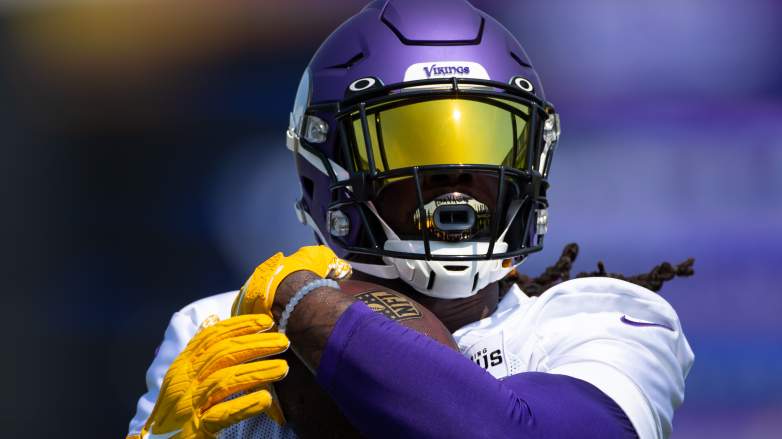
After parting ways with Dalvin Cook, the Minnesota Vikings are striving to improve their running game through the sum of its parts.
However, they’ll have to do so without third-year speedster Kene Nwangwu, potentially long term.
Last week, Nwangwu was placed on the injured reserve list and is not eligible to return to the active roster until Week 5, but he could be out longer than the minimum four weeks.
Head coach Kevin O’Connell didn’t offer a timeline for Nwangwu, who he said is dealing with lower-back issues, and made no promises of Nwangwu being back this year.
“Kene, who we were able to carry through [on the 53-man roster] and then put on injured reserve gives him the opportunity to work through his injury and ultimately maybe return to help us a some point — don’t want to put a timeline on that,” O’Connell said in an August 31 media conference.”Conversations with Kene, He’s feeling better and better we’ll continue to work through that and try to get him back with us at some point this year.”
O’Connell persisted that he did not want to put a timeline on Nwangwu to prevent any rush for his rehab.
“Putting timelines on some things can be unfair to the player. We want him to feel strong and ready to go to truly have his impact on the team that he’s had,” O’Connell added. “We’re working with Kene every single day on that. We’re going to be with him every step of the way.”
Since entering the league as a fourth-round pick in 2021, Nwangwu leads the league with three kickoff return touchdowns. He was poised to take a step forward and contribute on offense this season.
However, for the time being, Ty Chandler will take over as the team’s kickoff returner. He’ll relieve starter Alexander Mattison alongside recently signed veteran Myles Gaskin.
Vikings Running Game’s Biggest Boost for the 2023 Season

GettyFormer Ravens TE Josh Oliver signed with the Vikings this offseason.
The Vikings didn’t make many blockbuster moves to bolster the running game after releasing Cook in June — but one signing does show signs of how Minnesota intends to run its offense.
Former Baltimore Ravens tight end Josh Oliver, who signed a three-year deal with the Vikings in March, was the biggest addition to the offense through free agency. Oliver is one of the league’s best run-blocking tight ends, ranking second among 84 qualifying tight ends in Pro Football Focus’ run-blocking metric.
The investment into Oliver shows Minnesota intends to break its mold as an 11-person (one running back, one tight end, three wide receivers) team from a year ago and get bigger on the offensive front.
The Vikings should be expected to deploy more two tight-end sets and also get fullback C.J. Ham (who signed a two-year extension in March) more involved. By adding more bodies close to the line of scrimmage, the running game should have more consistent gains for the running back room to exploit.
No, the backfield won’t be in the business of hitting home runs like Cook did but instead will take what’s given.
Defenses will have to pick their poison: defend the run and leave Justin Jefferson against single-high coverage, or hemorrhage yards on the ground.
A more consistent run game should open up the passing game for everyone, making this year’s offense potentially more dangerous despite the departure of Cook.
Alexander Mattison Should Keep Vikings Offense Moving Forward

Courtesy of VikingsViking running back Alexander Mattison at 2022 training camp.
For those expecting Mattison to be a one-for-one replacement for Cook, that is not the expectation the team has for him.
Last season, Cook showed he still has the explosiveness to score from anywhere. the field. Mattison is a significant downgrade in explosive potential. The longest touchdown of his career went for 14 yards, compared to Cook’s eight career touchdowns of 20 or more yards.
But on a larger scale, Cook was also costing the Vikings plenty of yards due to inefficiencies running the ball, leading the league with 62 rushes of zero or negative yards, per ESPN.
The chart below shows both backs rushing yards over expected (RYOE) — a metric that grades every run on whether they gained more, less or what was expected compared to an average running back in the NFL.
Mattison may not be the remedy to the Vikings’ inefficiency running the ball last year, but the plan to build the running game around blocking and a less expensive running back room could be the answer.

Comments
Vikings Give Brutal Update on Breakout RB’s Injury